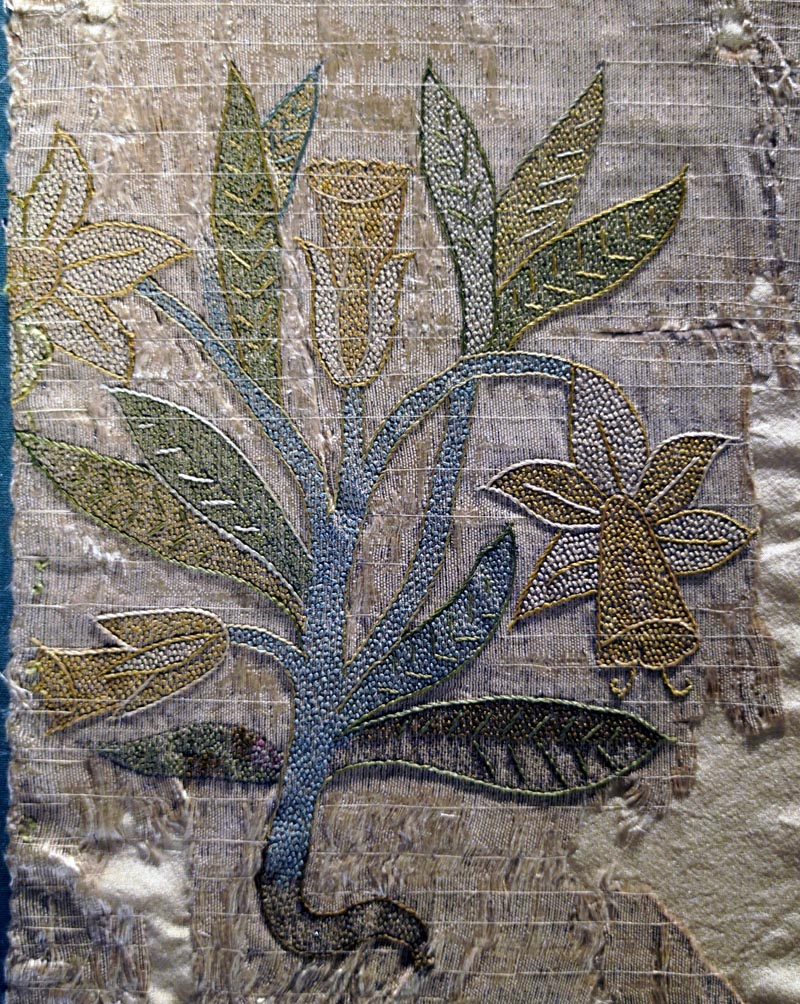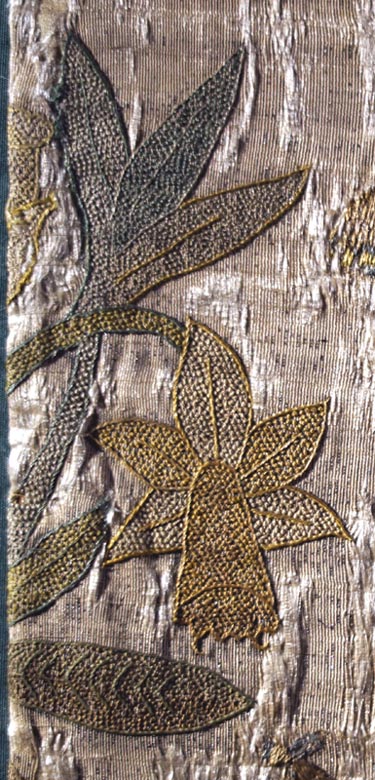One of the great pleasures in studying the Bacton Altar Cloth, even from afar mostly via photographs, is that so many intriguing questions present themselves. What materials were used? Who stitched the designs? How was the fabric and embroidery used before it was an altar cloth? How would contemporary viewers have interpreted the work? To answer such conundrums clearly will take considerable time devoted by many people with diverse expertise.
One question seemed easy enough, but has dominated our initial attempts to describe the altar cloth: what flowers do the embroidered motifs represent?
At first we flipped through the photographs identifying easy ones that we knew from our own gardens or from their frequent use in Elizabethan embroidery, but names for many motifs eluded us. We began discussing sepal prominence, stamen colour, fruit clustering, and leaf position. It’s been more than two decades since I’ve taken a botany exam or done fieldwork to plot species density, but those dormant skills are apparently still tucked away in some cobweb-clogged corner of my memory. The younger me never imagined, as I poured over my immense copy of Radford, Ahles, and Bell’s Manual of the Vascular Flora of the Carolinas, that one day I’d be attempting to decipher plant species depicted in four-hundred-year-old silk embroidery floss, yet here we are.
Luckily motif 1 (based on the “map” of motifs shared here), though sadly cut during construction of the altar cloth, was simple to describe: a daffodil.
Since this motif is partial, we could learn more about it by finding matching motifs elsewhere on the work. Number 58 from the left side panel is almost complete, and appears to be worked from the same pattern. Same downward-pointing yellow and white flower, same cluster of three leaves somewhat awkwardly appearing above the flower’s arched stem.

The colours chosen for these leaves and stem are a bit different from the first daffodil, and motif 58 does have some spaces where the fill colour is missing, but the outlines appear the same.
Are there any other daffodils? Yes, another partial one, also on the left side panel, motif number 61. Unfortunately not one that I managed to capture clearly and crisply, so this blurry image will have to do for now:
Might this daffodil be the missing half of the first daffodil motif? I think it possible. The colour difference between the photos is the result of the different light levels in the different parts of the display case and should not be taken to mean that the embroidered silks or the background were as strikingly different as they appear here.
When the embroidered cloth was cut, the cut edge was simply folded under, hiding part of the floral motif, which could account for the entire upward pointing blossom visible in motif 58 but missing from both motif 1 and 61.
Here are images of the backs of two daffodil motifs showing the slightly variable amount of fabric that was folded under.
Photographs copyright Natalie Bramwell-Booth
If you will allow me to just admire those colours a moment, the bright blue of the stems, the many hues of green that make up each leaf, the saturated orange and the delicate yellow of each blossom…sigh. Oh, to have seen this embroidery when it was fresh and new, each stitch of silk floss bright as from the dyer’s vat, not faded from centuries in the sun, each silver thread glistening in the candlelight instead of being tarnished and dull!
But never mind the amazing artistry of the piece – what are the species depicted? I thought that it was simple enough to call motif 1 a daffodil, but the more I looked, the more I doubted myself.
Thoughts, questions and observations to be continued.




